Prevent killing or trying to grow fruit trees not suited for your USDA plant hardiness zone. Knowing which trees will flourish in your region will help you select the right tree species and add to your seasonal harvest.
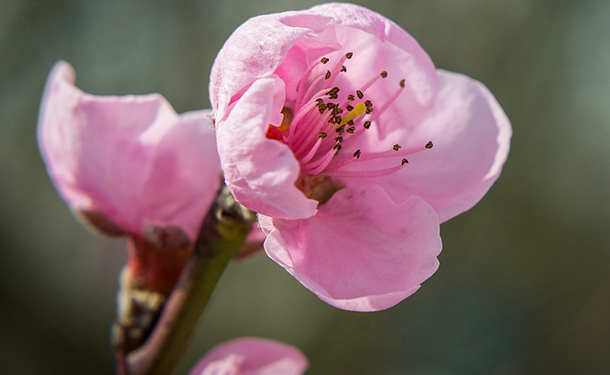
thetreecareguide.com gathered essential information and tips about 5 spectacular fruit tree species that thrive in the USDA’s hardiness zone 7.
1. Apple (Malus domestica)

Apple trees are small trees that can reach upwards of 25 feet in height with a crown spread of 25 feet. Apple tree foliage is simple, oval, has small serrations along the margin, and is alternately arranged along the branches.
Sun – Apple trees grow best with at least 8 hours of sun per day during the growing season.
Soil – The recommended soil for apple trees are well-draining medium-clay to sandy loam, fertile soils with a slightly acidic to neutral pH between 5.8 and 6.5
Size – A common full-size apple tree can reach 18-25 feet tall and wide (or more) at maturity.
Fruit – After 3 to 4 years, apple trees will set fruit in the spring, and the apples will mature from late summer through fall.
Varieties – Apple tree varieties that grow in zone 7 include:
- Empire
- Red Delicious
- Honeycrisp
- McIntosh
- Fuji
- Granny Smith
- Jonathan
2. Apricot (Prunus armeniaca)
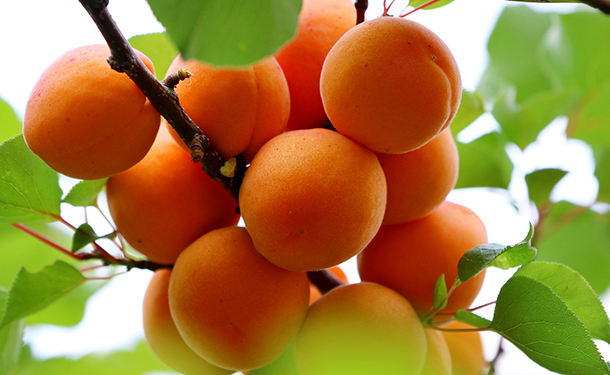
Apricot trees have a vertical growth pattern with a wide-spreading canopy. The tree’s foliage is ovate with pointed tips and serrated margins. This tree produces white to pink flowers, turning to a fleshy yellow to orange fruit.
Sun – Apricot trees grow best with 6 to 8 hours of sun per day during the growing season.
Soil – Apricot trees thrive in soil with a pH between 6.5 and 8.0. Well-drained loamy soil is fundamental for your apricot tree to grow a well-developed root system, which helps it produce fruit in greater quantities.
Size – A full-size apricot tree can reach 15-25 feet tall and wide at maturity.
Fruit – Apricot trees begin fruiting 2 to 4 years after planting. An apricot harvest takes place in mid to late summer.
Varieties – Apple tree varieties that grow in zone 7 include:
- Moorpark
- Moongold
- Scout
- Sungold
3. Cherry (Prunus avium)
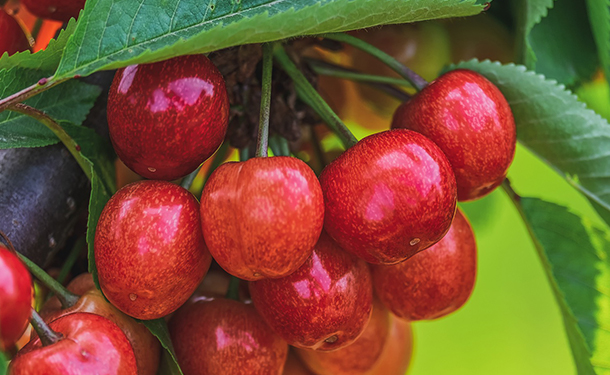
Prunus avium is a perennial tree grown for its fruit, the sumptuous cherry. Cherry trees have alternating oval leaves, which often have serrated margins and +/- 8 pairs of veins. The flowers are typically white and appear in small clusters.
Sun – Cherry trees require at least 8 hours of daily sun.
Soil – This species grows best in deep, well-drained loam soils. Cherry trees are notoriously susceptible to root rot, so the soil needs to drain well.
Size – Cherry trees typically grow to a height of 35 feet and a spread of about 25 feet at maturity. The dwarf varieties grow to an average height of 12–15 feet with a spread of about 12–15 feet.
Fruit – 5 to 8 years after planting, cherry trees will bloom in the spring and bear cherries in late May, June, or early July.
Varieties – Cherry tree varieties that grow in zone 7 include:
- Rainier
- Montmorency
- Bing
- Stella
4. Nectarine (Prunus persica var. nucipersica)
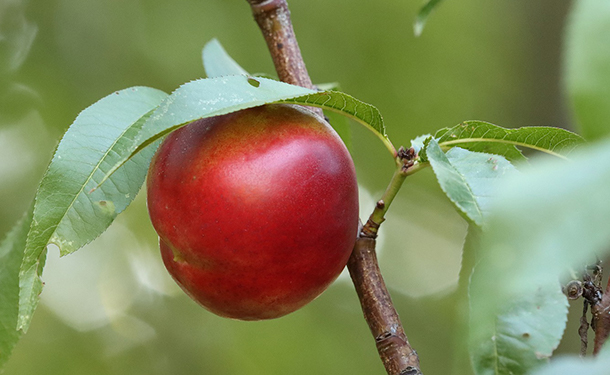
The nectarine tree is deciduous, small to medium in size, and grows similarly to a peach tree. Leaves are bright green, glossy, alternate, and long with toothed margins.
Sun – Nectarine trees grow best with at least 6 hours of daily sun during the growing season.
Soil – A nectarine tree’s ideal soil is a well-drained sandy soil with a pH between 6 and 7.
Size – A typical nectarine tree will reach from 18 to 20 feet tall and wide at maturity.
Fruit – 3 to 4 years after planting, nectarine fruit will need 3 to 5 months to reach harvest from the time flowers are pollinated. Nectarines are usually ready for harvest from mid to late summer.
Varieties – Nectarine tree varieties that grow in zone 7 include:
- Fantasia
- Sunglo
- Red Gold
- Carolina Red
5. Peach (Prunus persica)
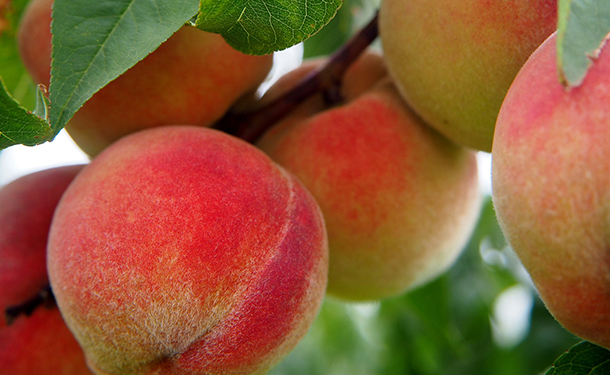
Prunus persica is a deciduous tree grown for its fruit, the peach. The typical peach tree is relatively short with slender branches and alternately arranged, slender, and pointed foliage.
Sun – Peach trees grow best with at least 6 hours of daily sun during the growing season.
Soil – Peach trees thrive in sandy loam topsoil that is 18 to 24 inches deep and underlaid with a brightly colored, well-drained clay subsoil. Conversely, shallow or poorly drained soils tend to produce smaller, more fragile trees with significantly lower fruit production.
Size – A mature peach tree can reach heights of 25 feet tall and nearly as wide if left unpruned.
Fruit – A peach will bear fruit only 2 to 4 years after planting. The fruit ripens for harvesting in mid to late summer, typically June through August.
Varieties – Peach tree varieties that grow in zone 7 include:
- Redhaven
- Contender
- Reliance
- Saturn
Fruit Trees in Zone 7
In this article, you discovered 5 incredible fruit trees hardy to USDA hardiness zone 7, their descriptions, and growing information.
Knowing which fruit tree species will flourish in your hardiness zone will help you plant the right trees to grow and eventually harvest.
Planting fruit trees outside their hardiness zone will result in stunted growth, disease and insect susceptibility, and severely reduced fruit production.
Sources:
plants.ces.ncsu.edu/plants/malus-domestica/
trees.umn.edu/apricot-prunus-armeniaca
pfaf.org/user/Plant.aspx?LatinName=Prunus+avium
edis.ifas.ufl.edu/publication/ST513